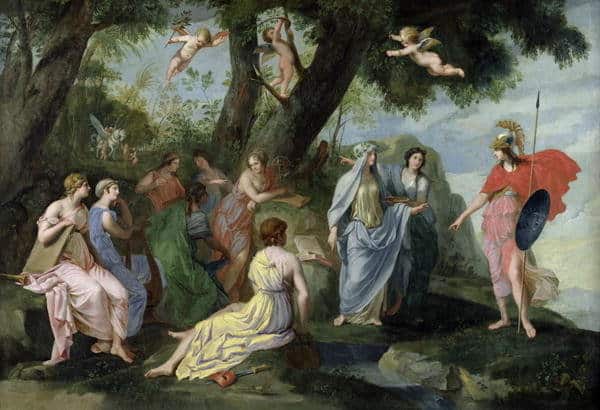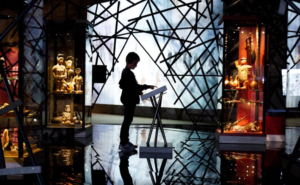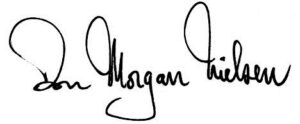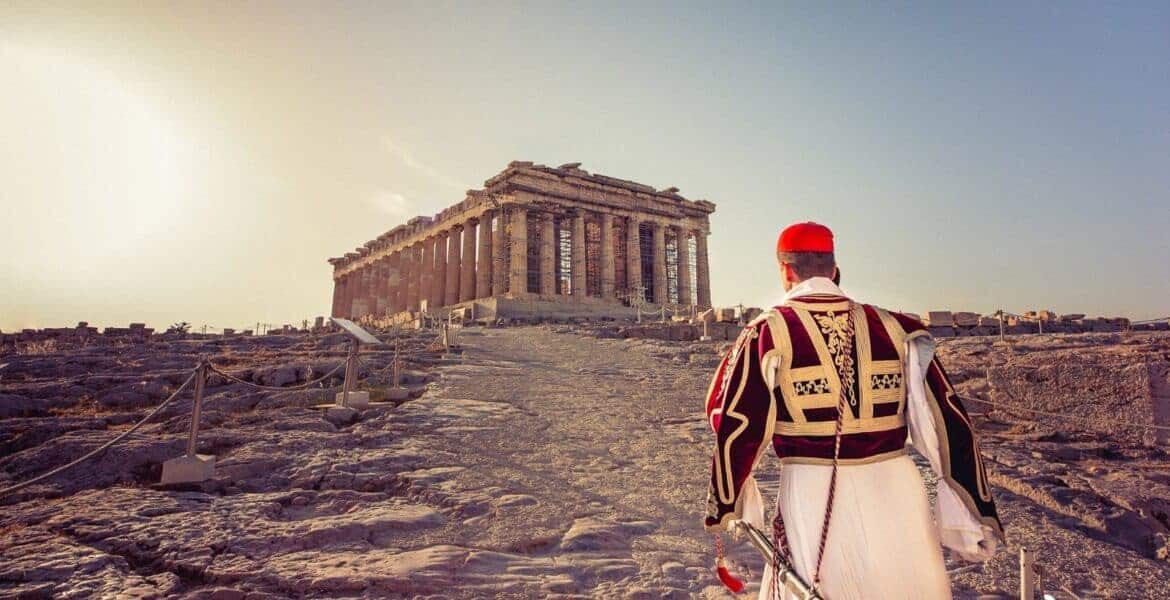That we've broken their statues,
that we've driven them out of their temples,
doesn't mean at all that the gods are dead.- IONIAN, Constantine Cavafy
I grew up in museums and love them, and so one of the hardest parts of the past year of limbo and lockdown was missing the experience of standing in front of a favourite painting or sculpture and noticing something new; or sitting alone, reading and thinking, in a museum café; or meeting friends to look and talk and contemplate together in special surroundings. It has been a hard time for museums and for those who love museums – and hard to watch them open up again in a brave new world for which many are not prepared. Things have changed; things had to change, and museums must change as well.
“It’s one of those situations where museums are going to have to figure it out,
or someone is going to figure it out for them.”
- Alice Proctor, Art Historian
A Book of Challenges and Possibilities
After long, anxious, expectant months, Greek museums finally opened their doors again on May 14 (2021). Despite the masks and other restrictions, it felt like Christmas morning, New Year’s Eve and Easter all rolled into one as I stood in line outside the National Archaeological Museum holding a new book: The Future of the Museum by András Szántó, featuring 28 dialogues with some of the most visionary museum directors in the world, compiled in the depth of lockdown, when museums were confronting their fate and future in a way they had never really had to before. This was the museums’ “dark night of the soul”, and Szántó’s book gathered, curated and distilled these lockdown dialogues into a lively conversation about what museums are doing and must do to evolve and model the kind of society we want to become. After making a short tour of my oldest and dearest marble “friends” in their galleries, and feeling more alive and hopeful than in months, I headed downstairs to one of the most intimate and interesting cafés in Athens, facing a small courtyard filled with olive trees, herbs and flowers, open to the blue sky above and surrounded by sculptures recovered from a 2,400-year-old shipwreck. A cat napped on a bench nearby, and with a cup of coffee, a plate of cookies and a sprig of rosemary on the table, I settled in to read and think about museums.

Home of the Muses
First of all, the word “museum” comes from the Greek “mouseion” (“home of the Muses” and a place of contemplation or “musing”). Fathered by Zeus, raised by Apollo, mentored by Athena and good friends of Dionysus, the Nine Muses: Clio, Euterpe, Thalia, Melpomeni, Terpsichore, Erato, Polymnia, Ourania and Calliope were a lively and inspiring bunch. However, faced with revolutions in the arts and technology – and a need to focus on social justice, the environment and other challenges and possibilities – new muses should be added, and the “home of the Muses” could use some shaking up as well.
Challenging Times For Museums
One of the world’s greatest museums – The British Museum in London – exemplifies the challenges faced by European museums founded in earlier times to showcase the trophies and glory of empire. The British Museum does an old thing very well, but now it is being called upon to do a new thing. In many cases, as in its choice of sponsors and its avoidance of dialogue with aggrieved source nations and communities, it is not rising to the challenge, not leading but resisting. This refusal to acknowledge the big issues of our time in a brave and generous way has opened the Museum to a firestorm of criticism and is steadily eroding its public trust and reputation.
An Eloquent Resignation
Emblematic of this problem was the resignation of acclaimed Egyptian author Ahdaf Soueif from the Museum’s Board of Trustees in 2019 in protest over the Museum’s partnership with oil giant British Petroleum in the midst of a climate crisis and its ongoing refusal to engage with source nations over the repatriation of looted artefacts. In her bombshell letter in The London Review of Books, Soueif eloquently explains her reasons for resigning and the agony of working with one of Britain’s great institutions at a time when it is called on – but refuses – to show moral and social leadership:
“[The British Museum] is in a unique position to lead a conversation about the relationship of South to North, about common ground and human legacies and the bonds of history. Its task should be to help us all imagine a better world, and – along the way – to demonstrate the usefulness of museums… The British Museum is not a good thing in and of itself. It is good only to the extent that its influence in the world is good.”

A Climate of Crisis
Other trustees and museum professionals across the United Kingdom began to follow suite as the Government sought to impose its views and quell dissent at state-funded institutions (despite its avowed “arms-length” policy). A number of museums also compounded the problem by turning a deaf ear to the cries for change outside their doors. At The Science Museum, for instance, a flood of high-profile resignations have occurred during the past year over its ongoing partnership with fossil-fuel companies Shell and Adani.
Sarah Dry, a well-known author on the history of science, led the exodus from the Museum’s Board of Trustees and was soon followed by Jo Foster, Director of the Institute for Research in Schools as well as University College London Professors Hannah Fry and Chris Rapley, who had also been the Museum’s Director from 2007 – 2010 and was currently the leading climate scientist on the Museum’s board.
Bill McGuire, Professor Emeritus of Geophysical and Climate Hazards at University College London, declared that it "beggars belief that this iconic British institution has freely chosen to link up with Shell to sponsor their flagship climate exhibition at such a crucial time. I can only conclude that they simply don't care, and have no interest whatsoever in playing a responsible role in tackling the climate emergency."

The Future is Here
Some institutions, however, do understand what this moment requires and are acting with agility, boldness and imagination to set an example for their communities, and the public is responding. Seeing photos of children dancing in front of interactive exhibits at the Children's Museum of Manhattan or taking charge of their own experience at the Museum of World Culture in Gothenburg, Sweden is a hopeful sight and reminds me of one of Athens’ many hidden gems – the Museum of Folk Instruments in Plaka, across from the city’s ancient octagonal waterclock, “The Tower of the Winds”.

Here is where I first saw people – adult human beings – wearing earphones and dancing in front of museum exhibits. Black & white photographs show the shepherds, craftsmen and musicians making and playing the instruments on display, while vintage recordings carry the music over the years and into the ears of enchanted modern visitors. In the grassy walled courtyard outside, where concerts regularly took place before the pandemic, ancient tortoises graze contentedly under towering palm trees. Joy is in the air, and entrance is always free.
Where Do We Look for Ideas?
In a way, new museums have a distinct advantage over the old imperial behemoths. Those regal vessels of culture and conquest carry most of their multimillion-object cargo in storage, and need to unload some of the ballast and problems of the past to make room for new passengers and destinations. More wall space and infrastructure won’t help. Preparing or creating museums for the future involves extensions in time, space and imagination through technologies like AR and VR and others yet to come. It involves spinning off some objects on loan or as gifts to build partnerships and new audiences. Responsible, smart museums return inequitably acquired artefacts and display identical replicas in their place – and use these examples to inspire new interest, dialogue and learning. They open their doors and let in light, air and new ideas. And at the heart of this enterprise is a sense of justice and generosity.
Glimpses of such innovative thinking can be found in András Szántó’s book, in the new Lucas Museum of Narrative Art in Los Angeles, in the preparations for the Museum of the Future in Dubai and in the infrastructure-free Universal Museum of Art, a museum which exists entirely in virtual reality, with limitless space and nearly endless possibilities. There is an entrance fee, and you have to supply your own cat and coffee, but you can explore the world of art in your bathrobe and slippers, and there are no lines.
New Metrics and New Muses
We are not talking about turning museums into amusement parks. “Amusement”, by the way, is not related to the word “Muse” but comes from a Latin word that means to stare stupidly at something. When the Director of the Louvre visited the British Museum for a conference in 2016, he shocked the audience by declaring that nearly 70% of his visitors had no idea what they were looking at.

Maybe we need a different set of metrics to gauge whether or not a museum is succeeding in engaging and inspiring its guests. Instead of seeing how many horses we can herd into the corral, why not count the number of people smiling, dancing, reading or sketching? Perhaps we also need to reconsider where we look for inspiration. Maybe we don't need more Muses – but new, different ones.

NEXT WEEK: In his final column for the year, Don Morgan Nielsen outlines a “radically generous” solution to this dispute and marks a temporary pause in this long conversation about the fate of the Parthenon Sculptures.
ABOUT THE PARTHENON REPORT | DON MORGAN NIELSEN:
In this bicentennial year since the birth of the modern Greek State, of both pandemic and celebration, Greek City Times is proud to introduce readers to a weekly column by Don Morgan Nielsen to discuss developments in the context of history, politics and culture concerning the 200-year-old effort to bring the Parthenon Sculptures back to Athens.
Classicist, Olympian and strategic advisor, Don Morgan Nielsen is currently working with a growing international team to support Greece’s efforts to repatriate and reunify the Parthenon Sculptures.
Featured Image: Copyright Nick Bourdaniotis | Bourdo Photography
Click here to read ALL EDITIONS of The Parthenon Report by Don Morgan Nielsen

